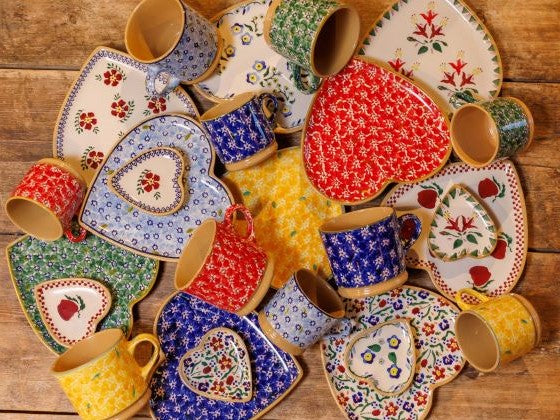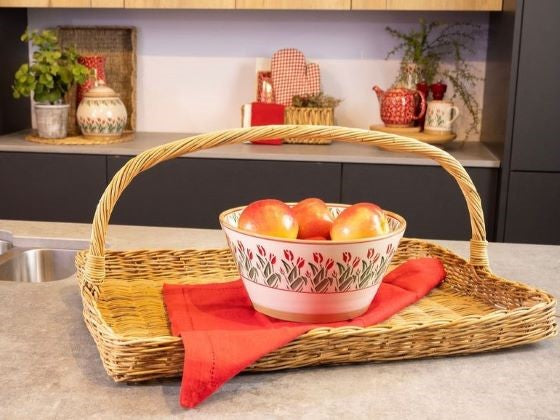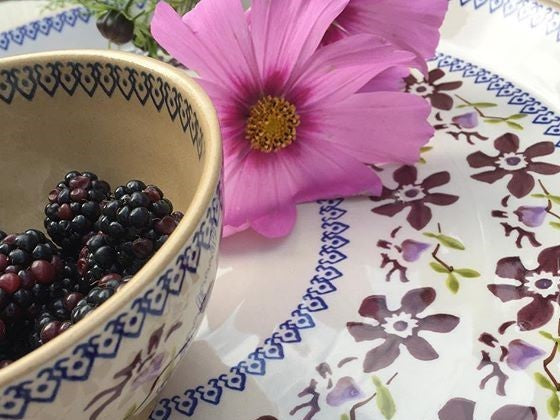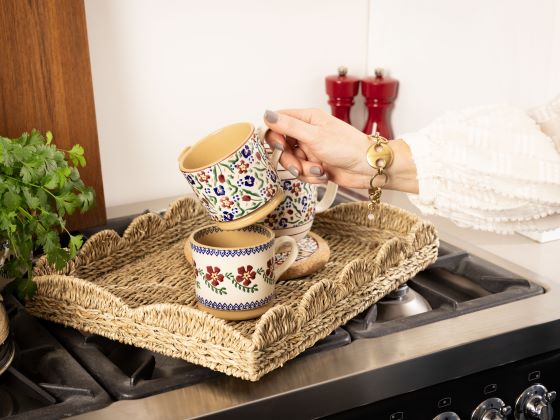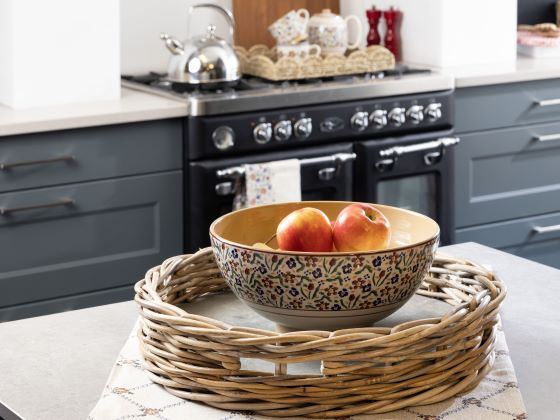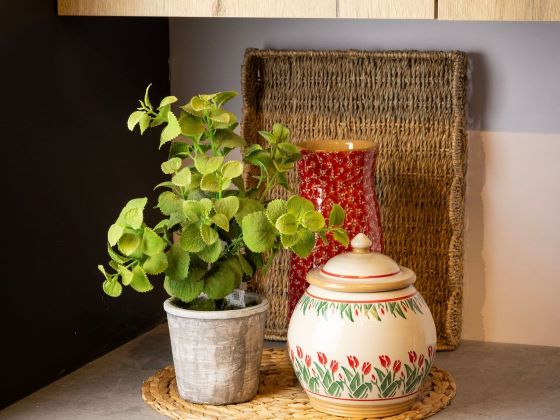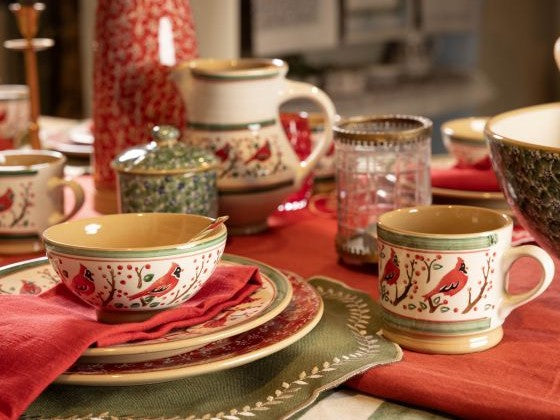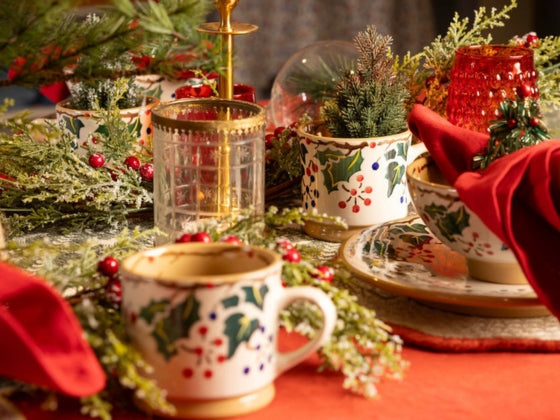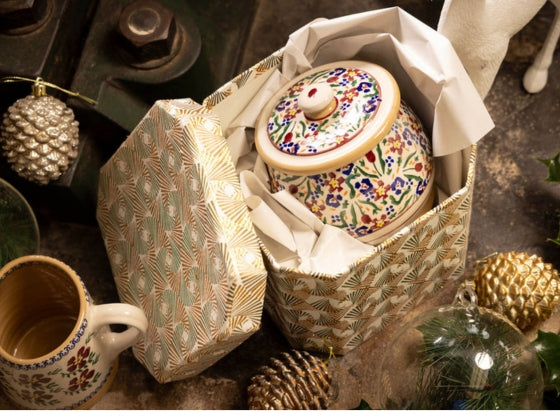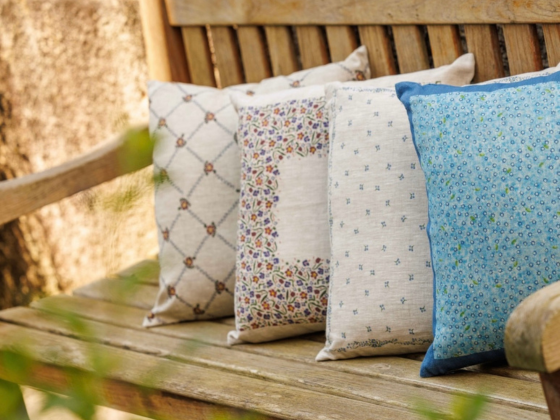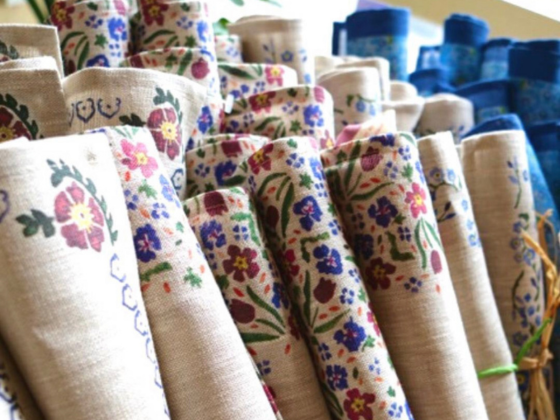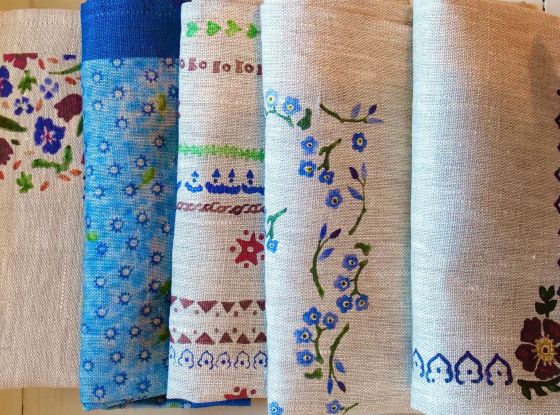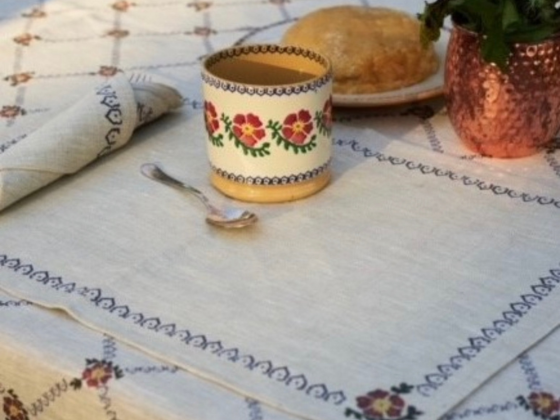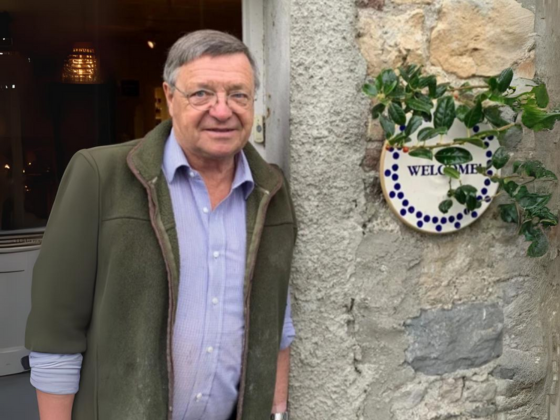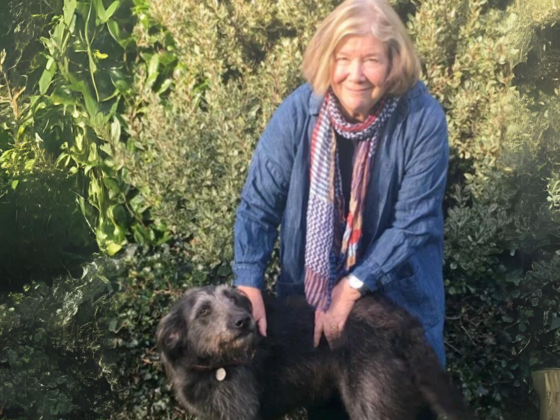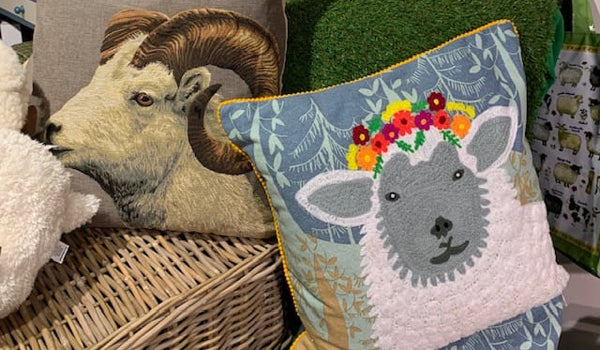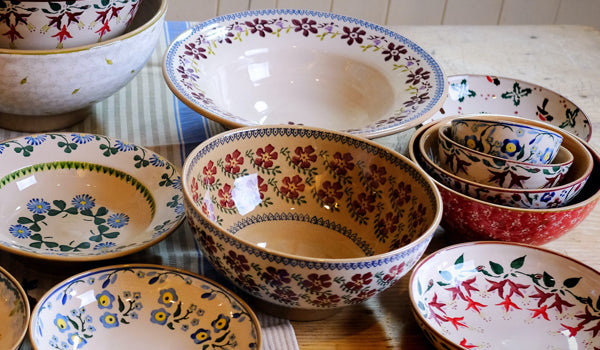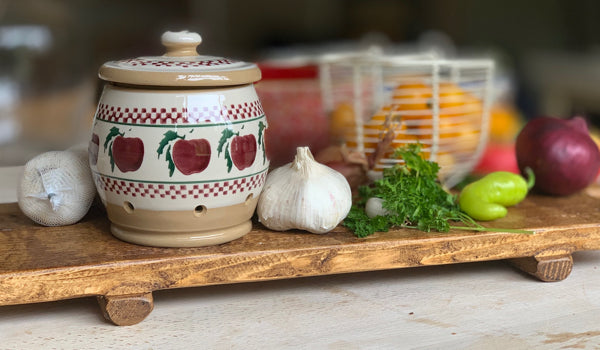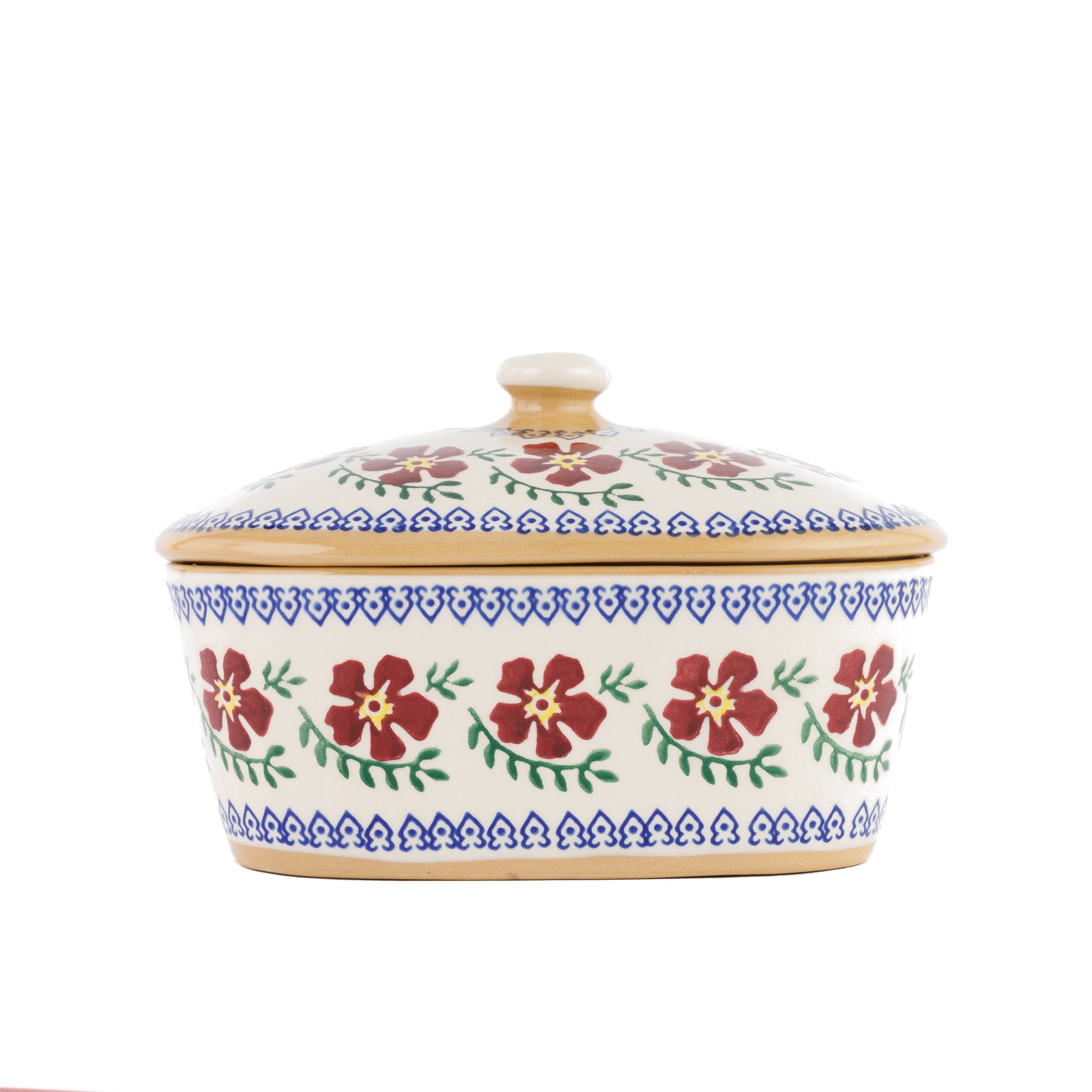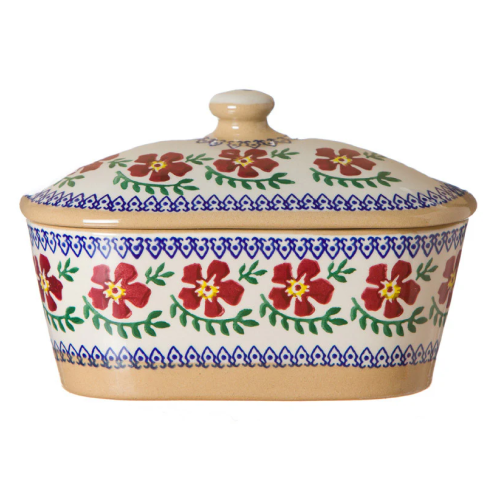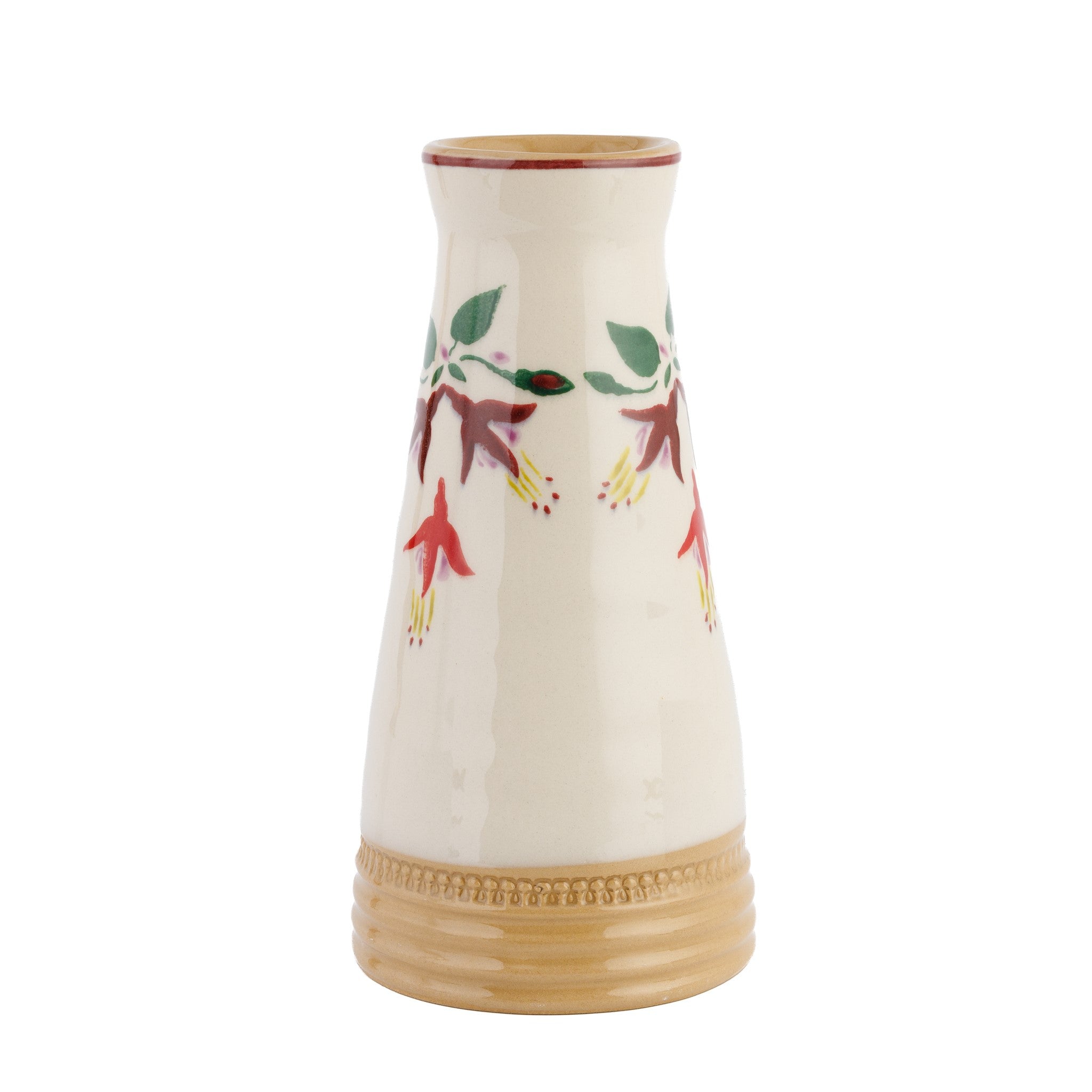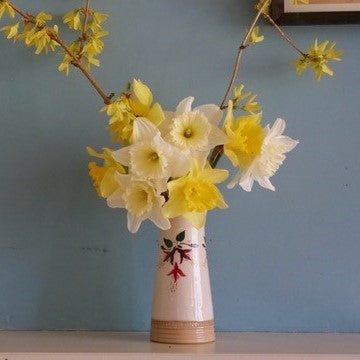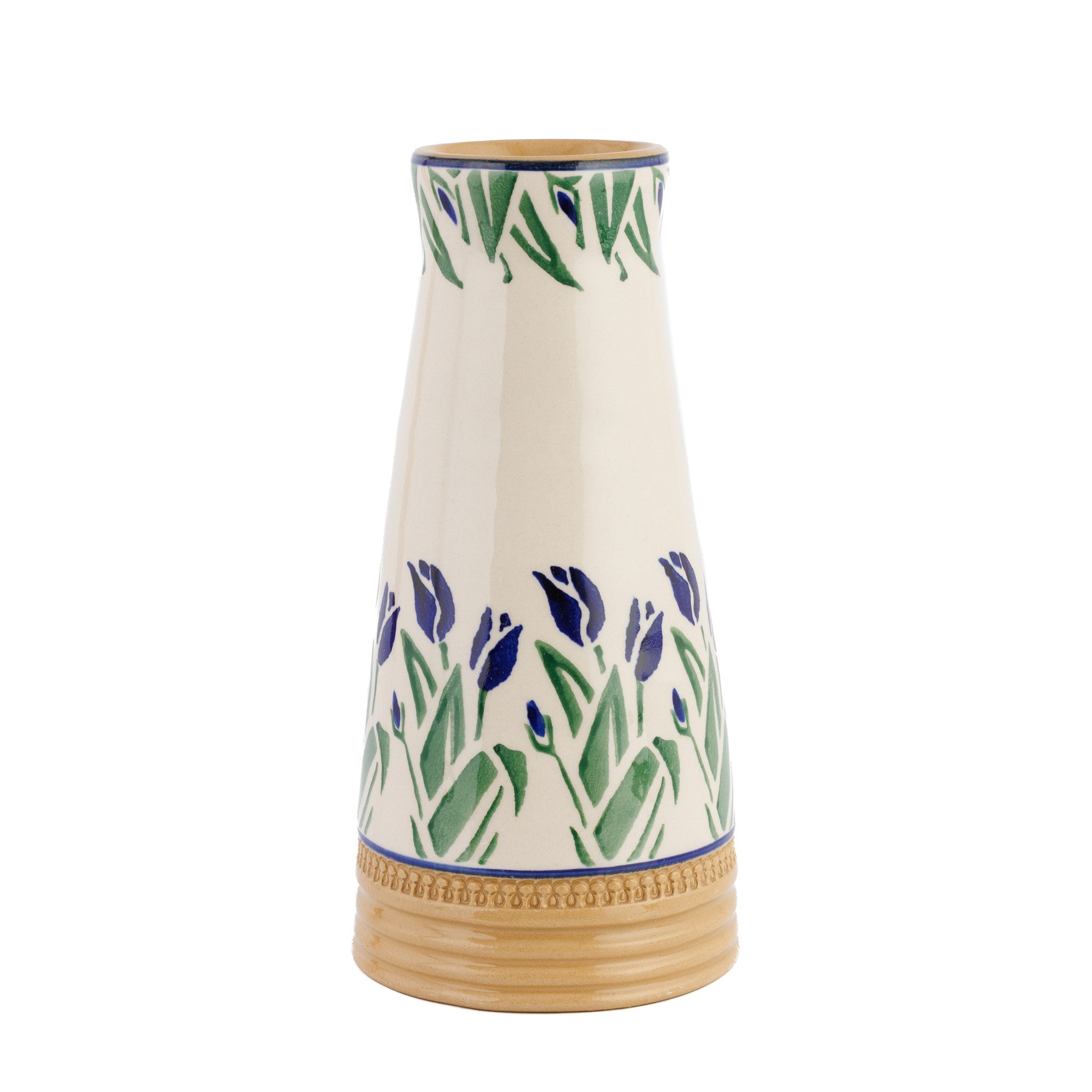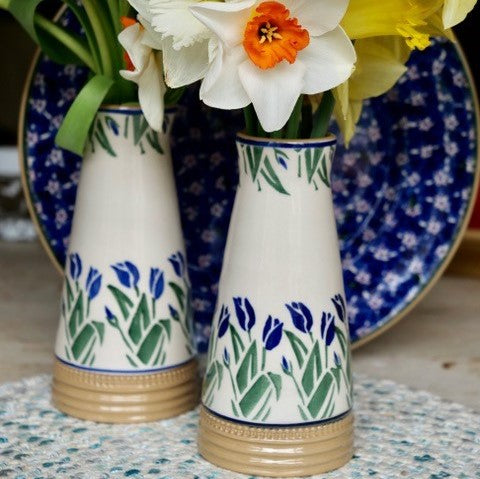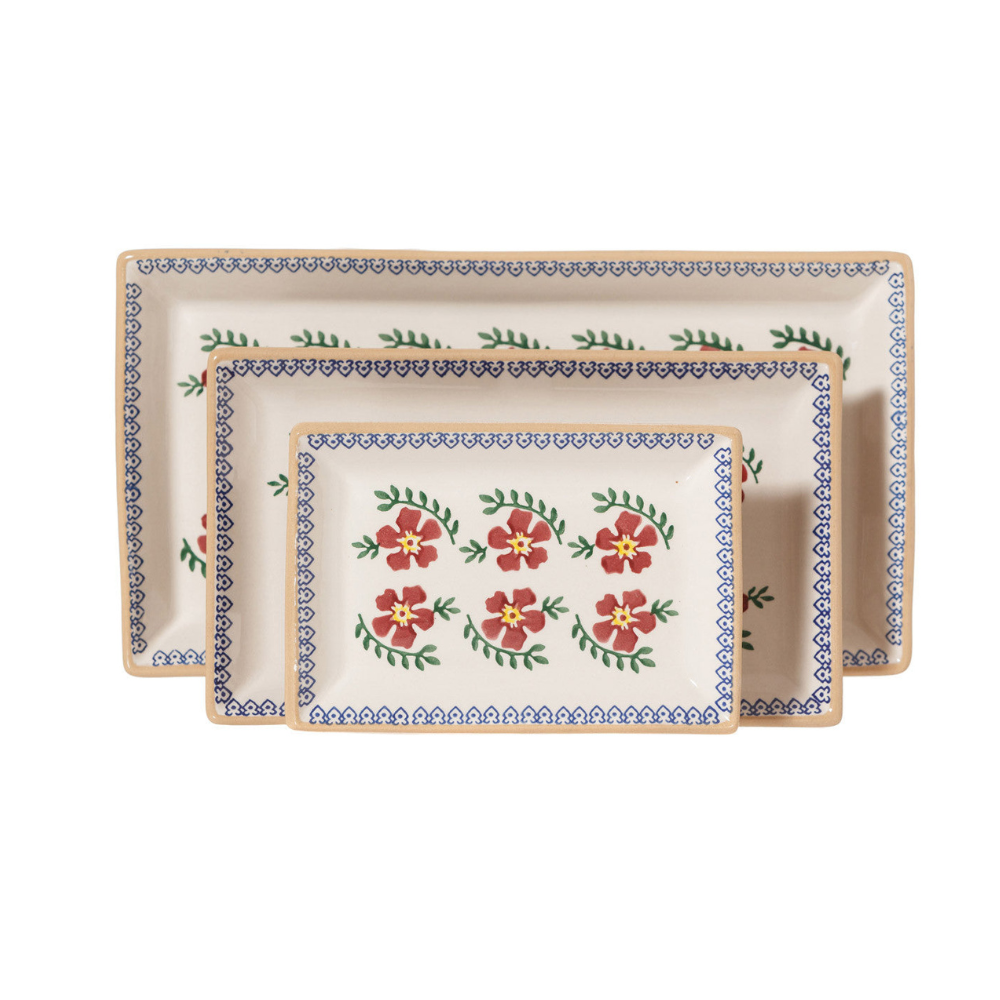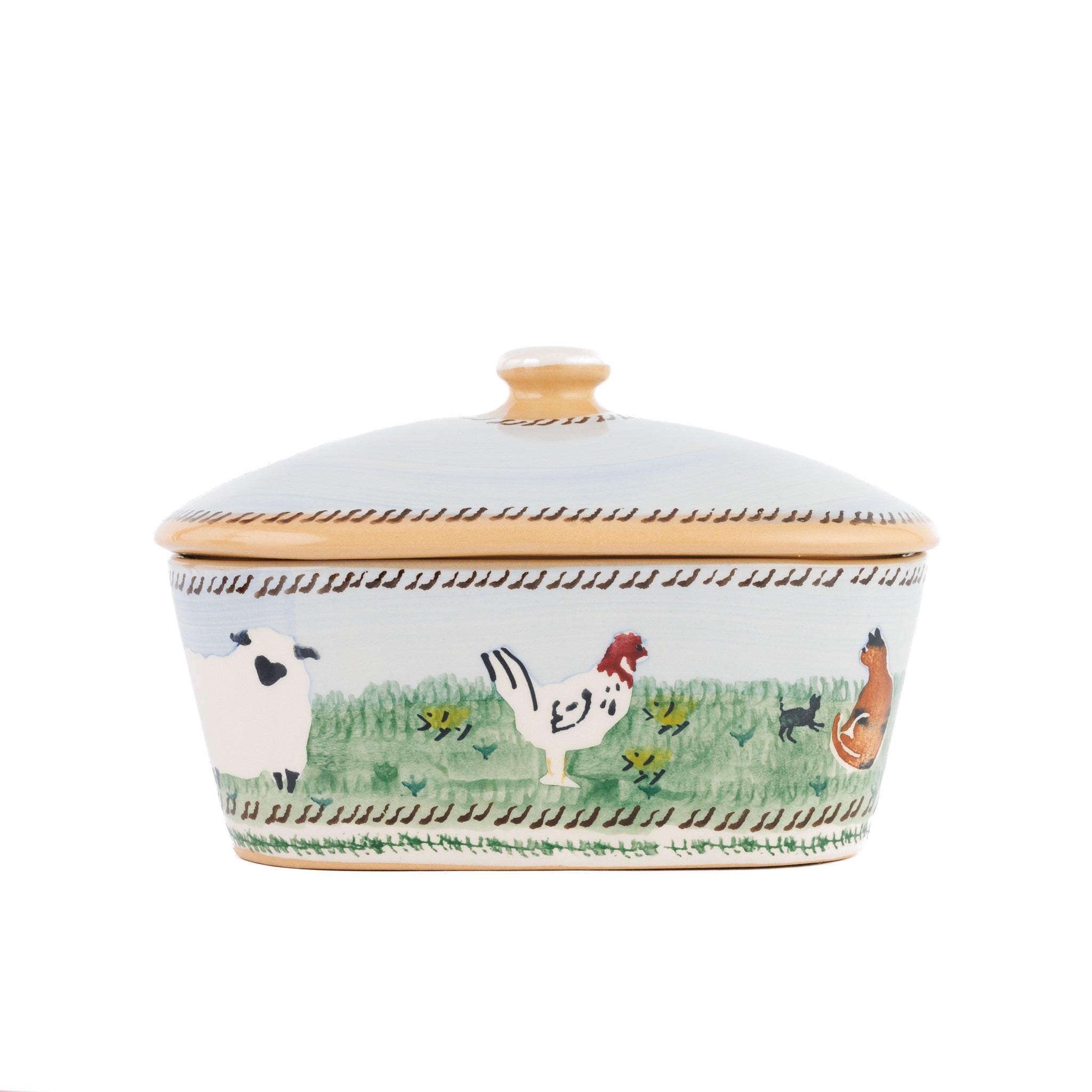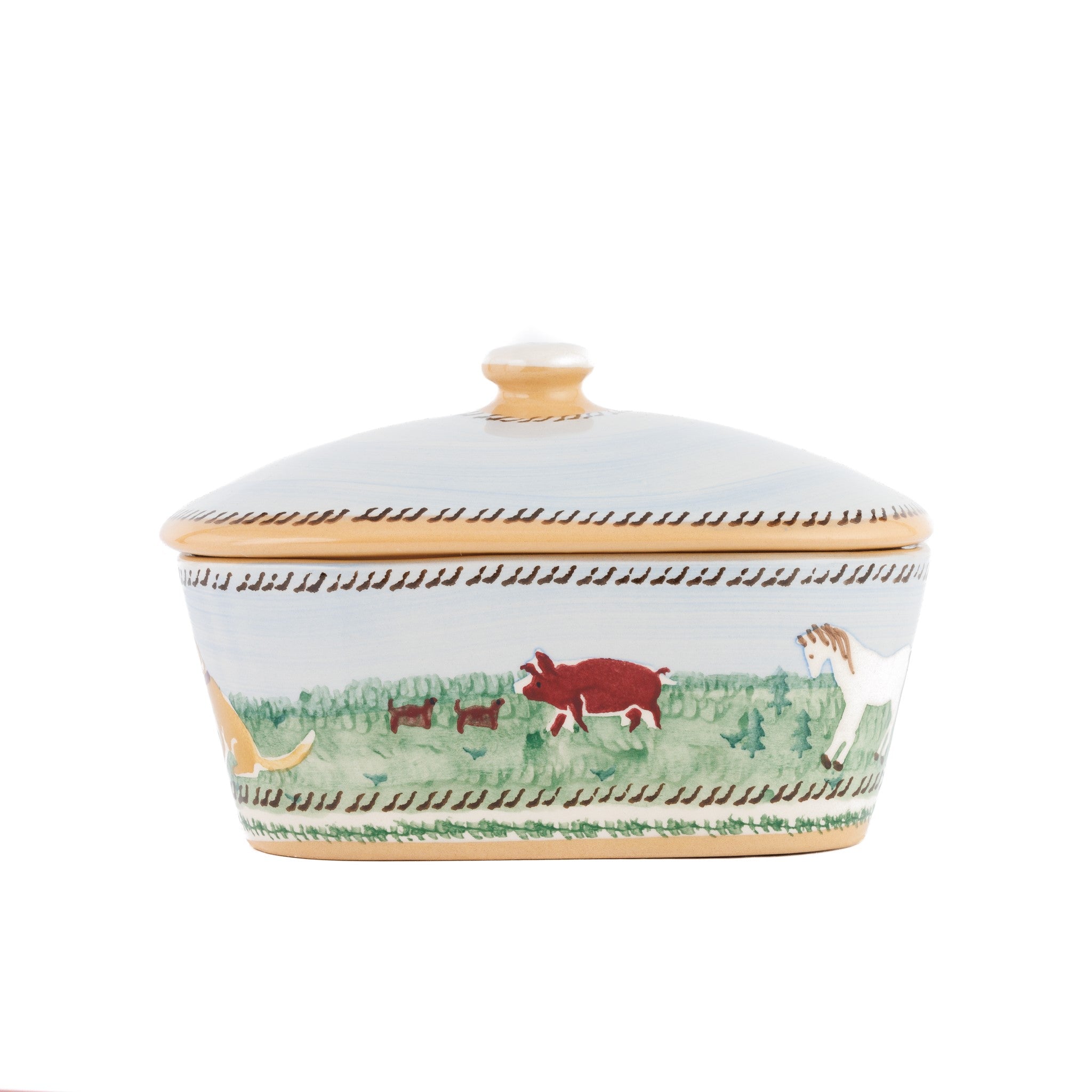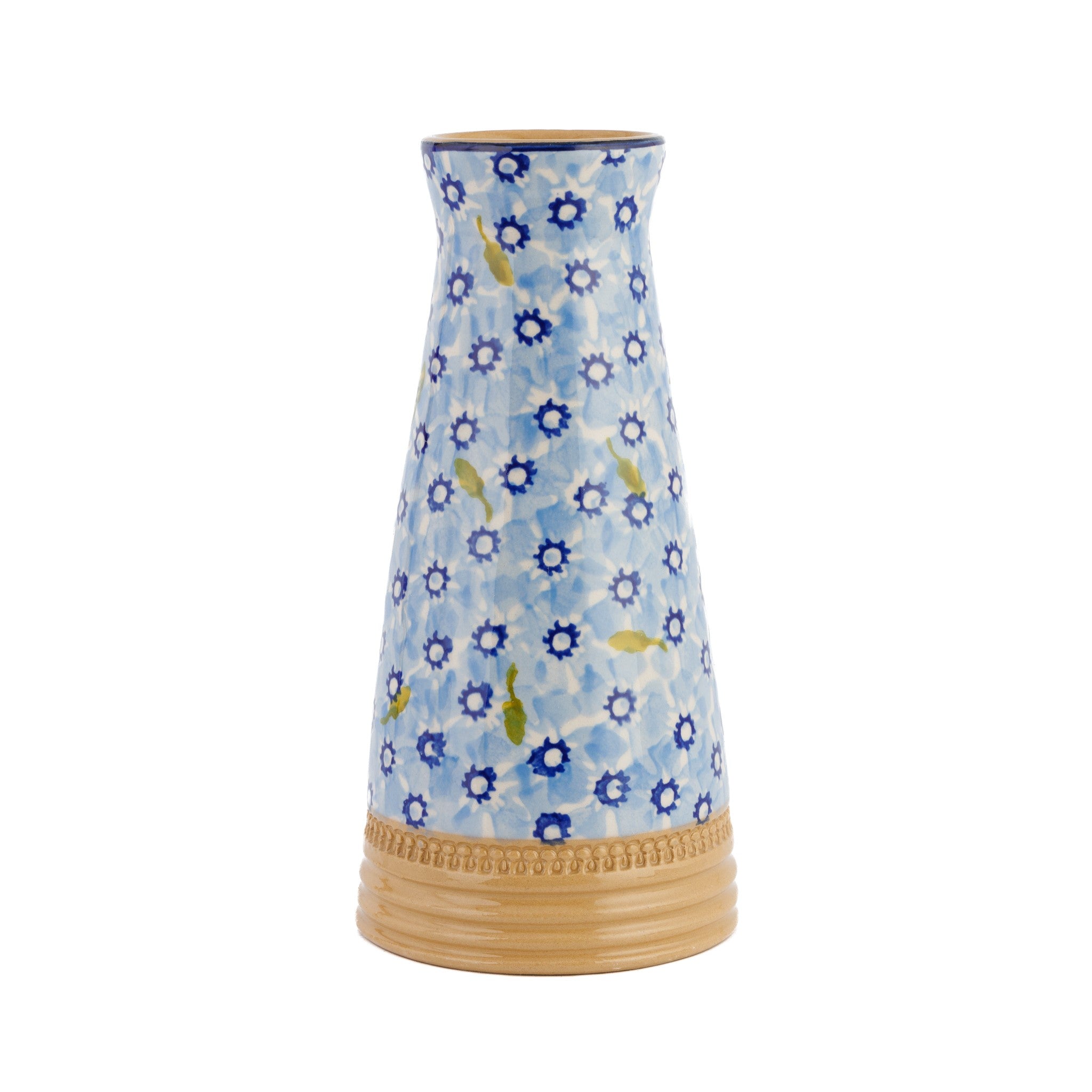The clocks have changed, and so has the season. When it was light is now dark, humidity has turned to dampness as many a tree offers a final burst of colour before shedding its leaves and turning dormant. As the outlook for the next few months isn’t one that is likely to produce much vitamin D, at least not here in Ireland, we turn to our expert ways of kindling a feeling of warmth through twinkly lights and snuggly knits and weaves. At this time of year, I become quite the fan of mittens, neck warmers, tank tops and ponchos. When practical jobs still need to be done, these ‘almost clothes’ offer a semi-covering that boost warmth while giving essential extremities freedom of movement. Just like a tea cosy that keeps the pot’s contents hot without hindering its function. I’m also a fan of a never-ending cup of tea so a tea cosy is essential.
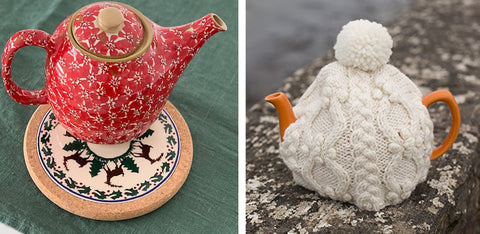
In Ireland we don’t reserve our knitting skills for jumpers but extend them to all arenas. Tea cosies are the perfect partnership between clay and wool. They’re also a good advert for retaining heat efficiently. Our new teapot trivet is good at keeping heat off surfaces that don’t like it.
There is much in the press about energy – about how we should be shifting to renewable sources and using it more efficiently. In the coming years, heating systems will change dramatically to mitigate climate change, if that’s even possible. With this in mind, it’s probably a good idea to start now to get used to living with a cooler indoor temperature and to the simple but effective way of keeping warm through the winter by wearing more clothes. I predict that those other ‘almost clothes’ leg warmers are going to make a comeback!
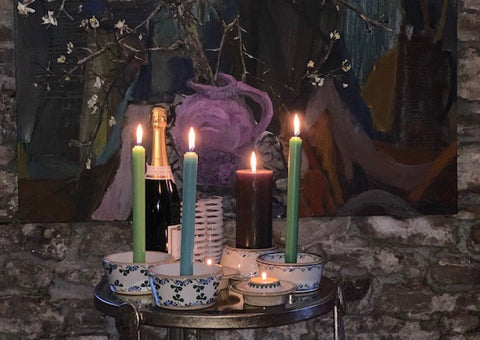
Candles can be made from all sorts of materials other than paraffin: many have a more sustainable, ecologically friendly story such as coconut oil, vegetable wax, beeswax or soy.
At Nicholas Mosse Pottery we’ve always understood our source of energy needs to be sustainable and have generated the immense power needed to fire the kilns by drawing it from our hydroelectricity station beside the mill. Once made the heat doesn’t go to waste, but is redistributed around the mill through the in-house heating system and also used to dry the pottery pieces.
As sustainable natural materials go, clay is a good example, and abundant locally to us. It comes from the earth and can return to it with minimal impact. The same can also be said for one of the most versatile of materials – wool. We’ll certainly be wrapping ourselves up in more of it as we turn our thermostats down to stop the earth’s rising temperature. Wool is an amazing, ecologically happy product. Not only is it renewable and naturally durable, but to maintain it requires less energy as it doesn’t need to be washed as much as many other fibres due to its self-regulating properties. Often you can simply give a garment a bit of an airing before happily wearing it again without malodours. Another bonus for wool is that once it has reached the end of its life and darning is no longer an option, unlike many other fibres, wool can be fully recycled and the fibres carded and re-spun into yarn to be woven or knitted into something new. And if not recycled, it biodegrades in an equally harmless way to the planet.
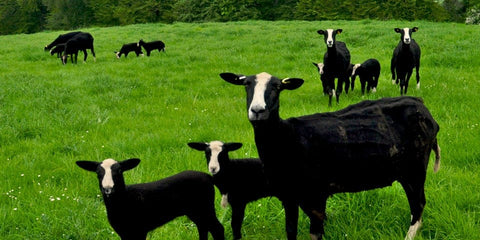
Distinctive Zwarbles sheep enjoying the meadows at Black Sheep Farm in Bennettsbridge.
We’re lucky to have a handsome flock of rare breed sheep living up the road on the outskirts of Bennettsbridge, whose fine yarn is made into striking blankets. Farmer, writer and photographer Suzanna Crampton keeps the flock of Zwartbles sheep. Their black fleece (with coffee-coloured tips) and prominent white blaze down the centre of their faces cuts a striking impression in the rich green fields of Black Sheep Farm, which has been in Suzanna’s family for eight generations. Stylish twill weave blankets are made from the Zwartbles’ natural (undyed) yarn, complete with white strips to reflect the flash of white in their colouring. From field to loom it all happens within 25km, as the blankets are woven not far from us at Cushendale Woollen Mills on the edge of Co. Kilkenny. A Zwartbles Travel Rug starts life with very low mileage.
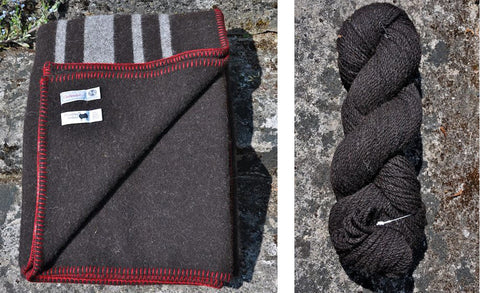
If you’re a skilled knitter and able to cable stitch or knit-one-pearl-one you can buy hanks of Zwartbles yarn to make your own creation – a pair of those aforementioned leg warmers or a tea cosy?
So, let’s heat ourselves with a constant mug of hot something and, taking inspiration from animals that grow a thick winter coat like our sheepie friends, insulate ourselves with one or many fine pieces of knitwear, and the cold season ahead will feel truly balmy.
Wishing you all well this winter and that you keep warm inside and out.
Susan Mosse
https://twitter.com/ZwartblesIE
All photographs of the Zwartbles sheep: Suzanna Crampton

